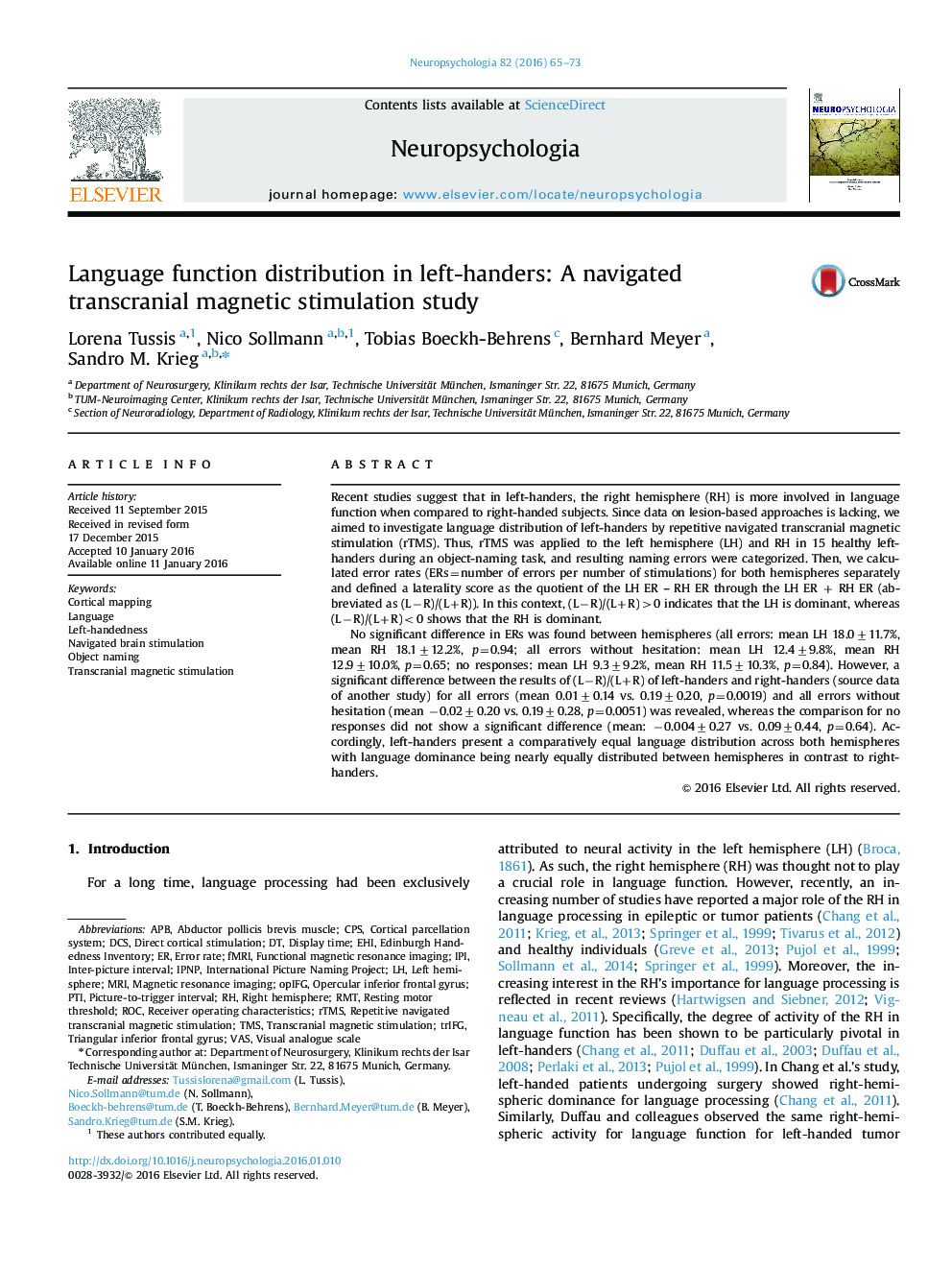| Article ID | Journal | Published Year | Pages | File Type |
|---|---|---|---|---|
| 7319328 | Neuropsychologia | 2016 | 9 Pages |
Abstract
No significant difference in ERs was found between hemispheres (all errors: mean LH 18.0±11.7%, mean RH 18.1±12.2%, p=0.94; all errors without hesitation: mean LH 12.4±9.8%, mean RH 12.9±10.0%, p=0.65; no responses: mean LH 9.3±9.2%, mean RH 11.5±10.3%, p=0.84). However, a significant difference between the results of (LâR)/(L+R) of left-handers and right-handers (source data of another study) for all errors (mean 0.01±0.14 vs. 0.19±0.20, p=0.0019) and all errors without hesitation (mean â0.02±0.20 vs. 0.19±0.28, p=0.0051) was revealed, whereas the comparison for no responses did not show a significant difference (mean: â0.004±0.27 vs. 0.09±0.44, p=0.64). Accordingly, left-handers present a comparatively equal language distribution across both hemispheres with language dominance being nearly equally distributed between hemispheres in contrast to right-handers.
Keywords
VASrTMSTMSPTIEdinburgh Handedness InventoryEHIdisplay timeIPIAPBRMTDCscpsROCresting motor thresholdMRIdirect cortical stimulationTranscranial magnetic stimulationMagnetic resonance imagingfMRIfunctional magnetic resonance imagingNavigated brain stimulationLanguageCortical Parcellation SystemAbductor pollicis brevis musclevisual analogue scaleObject namingerror rateCortical mappingright hemisphereleft hemispherereceiver operating characteristicsLeft-handedness
Related Topics
Life Sciences
Neuroscience
Behavioral Neuroscience
Authors
Lorena Tussis, Nico Sollmann, Tobias Boeckh-Behrens, Bernhard Meyer, Sandro M. Krieg,
